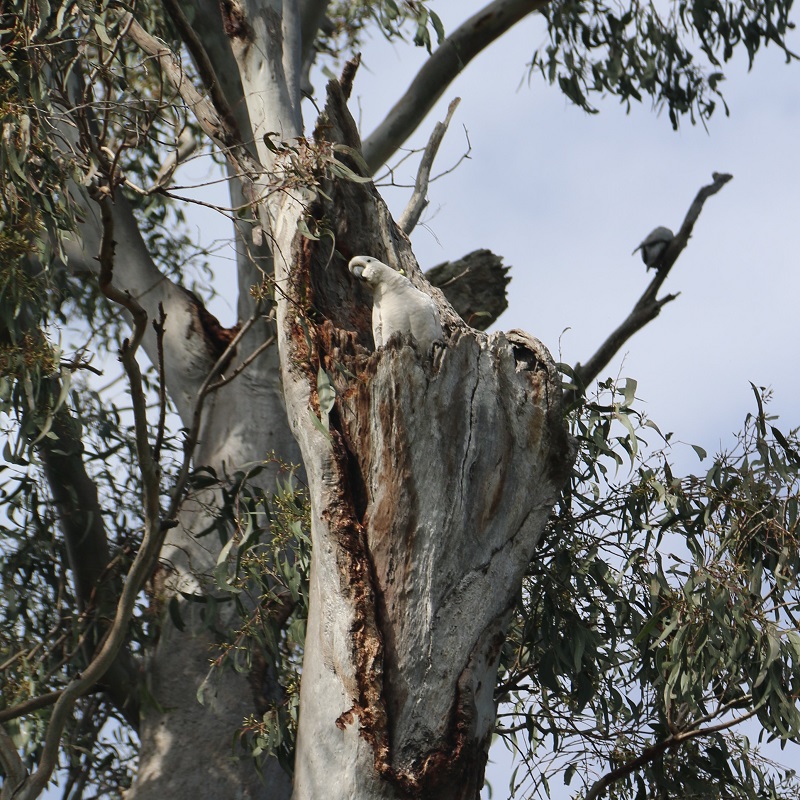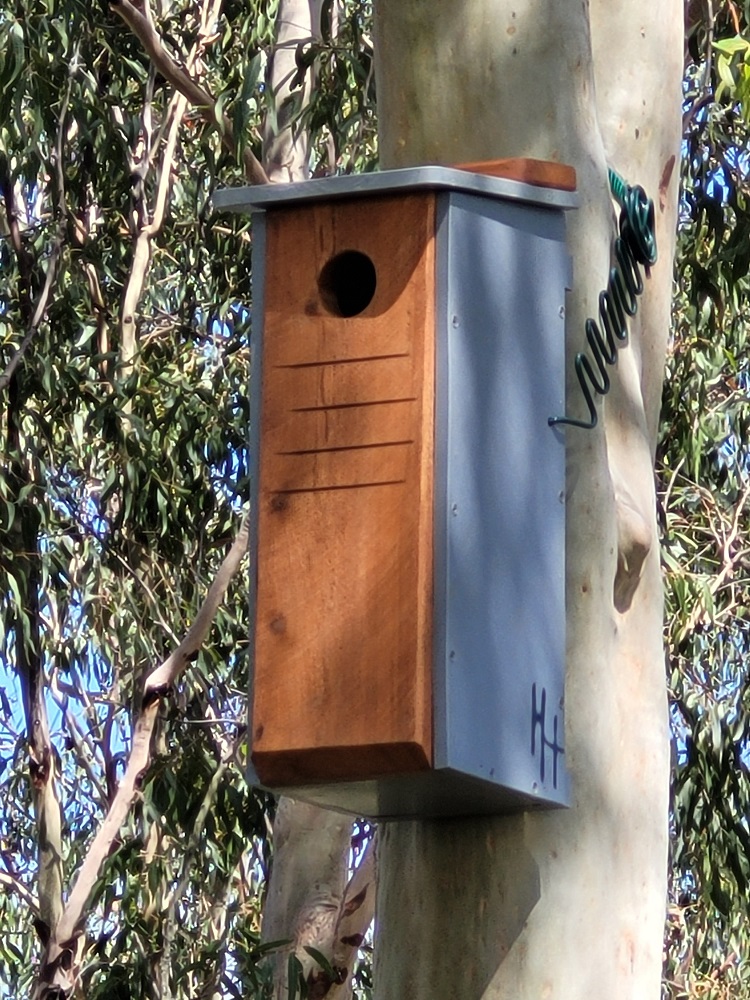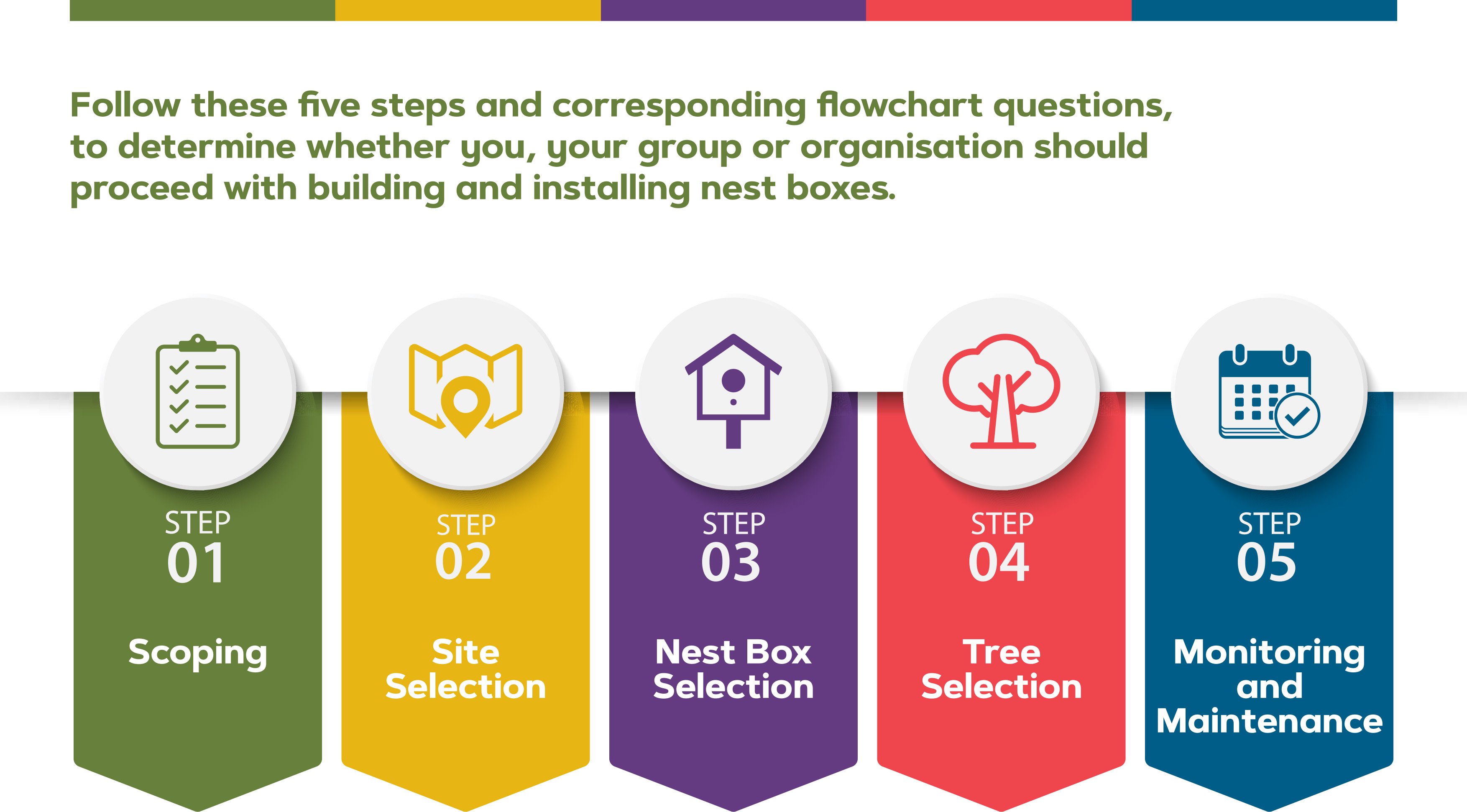We humans take pride in our homes. The all-important roof over our head that meets our basic need for security. It keeps us warm, dry and safe. Without this shelter we would be exposed to the elements - the blistering heat, the freezing cold, the driving winds and the drenching rain. We also provide for the needs of our various pets, but all too often fail to relate to the needs of wildlife. We assume that they are alright out there in the bush, however only one-third of pre-European bushland remains, with the other two-thirds cleared for agriculture, pasture and urban development.
Habitat trees and hollows

In South-East Queensland, 134 species of wildlife have been identified as dependent on hollows for survival. Good habitat supporting a diverse wildlife population may have three to 10 hollow bearing trees per hectare, each with as many as 30 hollows of varying sizes.
Hollows are an integral component of the ecosystem and it can take 80 to 350+ years, depending on the species, to provide hollows to meet the needs of the full range of fauna.
Standing stags or dead trees are also an important source of hollows, and the retention of stags is important to meet the habitat needs of wildlife.
There also needs to be sufficient fallen hollows to support ground fauna. Taking hollow logs and fallen branches from an area to increase habitat or nesting sites in another area is not recommended as this will result in a reduction of habitat at the original site.
If hollow trees or trees with hollow branches are to be destroyed then the hollows may be salvaged and re-installed elsewhere.
Habitat/nest boxes
 Habitat/nest boxes are a way of supplementing the shortfall in natural hollows and should not be considered a replacement for natural hollows. The provision of boxes should achieve beneficial outcomes by supporting the less common and threatened native species. Wildlife does not select hollows at random; factors such as entrance size and shape, depth, degree of insulation, and location greatly affect when or if a hollow is used.
Habitat/nest boxes are a way of supplementing the shortfall in natural hollows and should not be considered a replacement for natural hollows. The provision of boxes should achieve beneficial outcomes by supporting the less common and threatened native species. Wildlife does not select hollows at random; factors such as entrance size and shape, depth, degree of insulation, and location greatly affect when or if a hollow is used.
There is no 'one size fits all' box.
Habitat/nest boxes need to vary in size and shape to reflect the target species or range of species likely to be encountered in an area. It is crucial to know what species inhabit an area.
The use of habitat/nest boxes should be targeted toward less common and threatened species, rather than feral, common, or opportunistic species that may already be competing strongly for hollows.
This information can come from a combination of sources, such as the recorded information by Ipswich City Council, records of wildlife societies, and personal observations of what species are in the general area.
Nest box decision-making guide
The Decision Making Guide for Installing Nest Boxes (PDF, 1.3 MB) has been developed with the aim to assist individuals, community groups and organisations with deciding whether building and installing nest boxes is an appropriate solution to assist wildlife.
It is important to understand that there are ecological complexities that come with nest boxes, both positive and negative
Use the following ‘Decision Flowchart’ to determine whether you, your community group or organisation should proceed with building and installing nest boxes.
IMPORTANT NOTE:
Council permission is required for any requests to install nest boxes on Council land. Please submit your application which will be assessed by Council’s permitting team in the Environment and Sustainability Department. Please ensure you have made all the considerations regarding your activity to install nest boxes as the best option for supporting wildlife.
Application For Installing Nest Boxes On Council Land
Alternatives to assist native wildlife
Nest boxes are not always the most suitable option for supporting wildlife.
Here are six alternatives:
- Join Habitat Gardens, Land for Wildlife or Bushcare
- Record wildlife sightings using iNaturalist and contribute to the Atlas of Living Australia
- Record and map the location of hollows and submit to environment@ipswich.qld.gov.au
- Visit the council Nursery for advice on native plants
- Undertake weeding on your property or as part of a Bushcare working bee
- Protect native wildlife from pets, such as keeping your dog on a leash or confining your cat to your property.
Habitat/Nest box tips
Special requirements
Some species may prefer their hollow to be horizontal, rather than vertical (e.g. kookaburra and lorikeet). Others may require hollows directly on the ground, partially buried, or partially to totally submerged (e.g. reptiles, amphibians, mammals and fish). Platforms may be required for birds of prey (e.g. owls, falcons).
Natural predators
Being eaten is part of the natural process. Native predators should not be excluded from habitat/nest boxes unless they are a threat to an endangered species or unbalancing the natural process (e.g. goannas, kookaburras and snakes).
Installation
The location of the box can be critical. A north-east to south-east aspect appears to be preferred by most species. Boxes should be at a height to meet the species needs and out of reach of human hands in order to avoid vandalism and potential predators (e.g. cats). They should be given protection from weather, including wind, rain, cold and direct heat from the sun.
Mounting
To establish a feeling of security, the box must be firmly mounted. The use of a strap, wire or chain around the tree has the potential to affect the future growth and health of the tree. Attaching the box with galvanised self-drilling screws will have a less harmful effect on the tree (e.g. type 17 - 14G x 100mm long hex head or bugle head batten screw). Note: Do not leave screws in the tree if the box is removed.